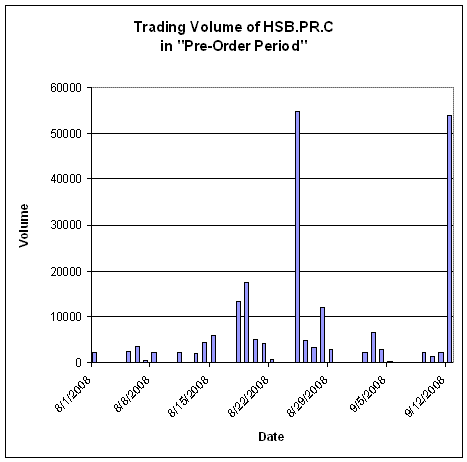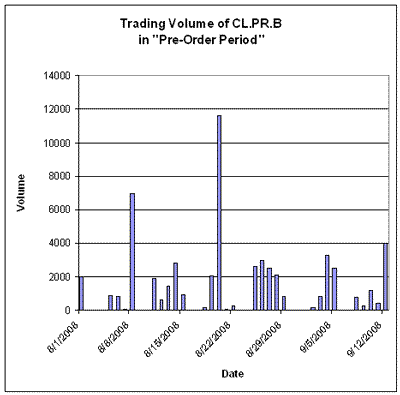The Russian Central Bank has come up with a novel bank recapitalization technique:
Russia’s central bank is exacerbating the ruble’s 34 percent plunge since August, even as it struggles to defend the exchange rate, by providing loans to banks that speculate on the currency, say Alfa Bank and UniCredit SpA.
Bank Rossii lent 7.7 trillion rubles ($214 billion) in overnight and seven-day loans secured with bonds or other collateral in the 16 trading days last month, about double the 4.8 trillion rubles provided in so-called repurchase auctions in December, central bank data show. Banks used “almost all” the money to bet against the ruble, said Natalia Orlova, chief economist at Alfa, Russia’s largest non-government bank. The ruble fell 18 percent against the dollar in January.
“A significant amount, if not all, of the speculative attacks on the ruble are funded by the central bank itself,” said Vladimir Osakovsky, Moscow-based economist for UniCredit, Italy’s largest bank.
Across the Curve believes that Treasury issuance is going to lead to higher government bond yields in the near future.
PerpetualDiscounts edged slightly lower today. Market volume was reasonable, but dominated by the recent Fixed-Reset issues.
| HIMIPref™ Preferred Indices These values reflect the December 2008 revision of the HIMIPref™ Indices Values are provisional and are finalized monthly |
|||||||
| Index | Mean Current Yield (at bid) |
Median YTW |
Median Average Trading Value |
Median Mod Dur (YTW) |
Issues | Day’s Perf. | Index Value |
| Ratchet | 5.36 % | 3.86 % | 24,117 | 17.63 | 2 | -0.1024 % | 855.8 |
| FixedFloater | 7.26 % | 6.98 % | 68,178 | 13.93 | 7 | -0.0367 % | 1,382.3 |
| Floater | 5.38 % | 4.42 % | 29,436 | 16.55 | 4 | 0.2567 % | 976.7 |
| OpRet | 5.29 % | 4.70 % | 158,414 | 4.02 | 15 | 0.2673 % | 2,031.7 |
| SplitShare | 6.23 % | 9.14 % | 72,246 | 4.08 | 15 | -0.2025 % | 1,787.7 |
| Interest-Bearing | 7.08 % | 8.13 % | 35,895 | 0.86 | 2 | 0.0000 % | 1,998.9 |
| Perpetual-Premium | 0.00 % | 0.00 % | 0 | 0.00 | 0 | -0.0337 % | 1,555.8 |
| Perpetual-Discount | 6.91 % | 6.96 % | 208,178 | 12.63 | 71 | -0.0337 % | 1,432.9 |
| FixedReset | 6.13 % | 5.84 % | 702,013 | 13.84 | 27 | 0.0942 % | 1,794.2 |
| Performance Highlights | |||
| Issue | Index | Change | Notes |
| CM.PR.K | FixedReset | -3.45 % | YTW SCENARIO Maturity Type : Limit Maturity Maturity Date : 2039-02-05 Maturity Price : 21.00 Evaluated at bid price : 21.00 Bid-YTW : 5.54 % |
| POW.PR.C | Perpetual-Discount | -2.47 % | YTW SCENARIO Maturity Type : Limit Maturity Maturity Date : 2039-02-05 Maturity Price : 20.52 Evaluated at bid price : 20.52 Bid-YTW : 7.16 % |
| NA.PR.N | FixedReset | -2.45 % | YTW SCENARIO Maturity Type : Limit Maturity Maturity Date : 2039-02-05 Maturity Price : 22.24 Evaluated at bid price : 22.30 Bid-YTW : 5.00 % |
| POW.PR.B | Perpetual-Discount | -2.03 % | YTW SCENARIO Maturity Type : Limit Maturity Maturity Date : 2039-02-05 Maturity Price : 18.82 Evaluated at bid price : 18.82 Bid-YTW : 7.21 % |
| BMO.PR.J | Perpetual-Discount | -1.61 % | YTW SCENARIO Maturity Type : Limit Maturity Maturity Date : 2039-02-05 Maturity Price : 16.47 Evaluated at bid price : 16.47 Bid-YTW : 6.86 % |
| RY.PR.E | Perpetual-Discount | -1.42 % | YTW SCENARIO Maturity Type : Limit Maturity Maturity Date : 2039-02-05 Maturity Price : 17.35 Evaluated at bid price : 17.35 Bid-YTW : 6.52 % |
| BNS.PR.K | Perpetual-Discount | -1.37 % | YTW SCENARIO Maturity Type : Limit Maturity Maturity Date : 2039-02-05 Maturity Price : 18.06 Evaluated at bid price : 18.06 Bid-YTW : 6.71 % |
| DFN.PR.A | SplitShare | -1.25 % | Asset coverage of 1.6-:1 as of January 30, according to the company. YTW SCENARIO Maturity Type : Hard Maturity Maturity Date : 2014-12-01 Maturity Price : 10.00 Evaluated at bid price : 8.70 Bid-YTW : 8.18 % |
| TD.PR.M | OpRet | -1.24 % | YTW SCENARIO Maturity Type : Soft Maturity Maturity Date : 2013-10-30 Maturity Price : 25.00 Evaluated at bid price : 25.55 Bid-YTW : 4.22 % |
| FFN.PR.A | SplitShare | -1.18 % | Asset coverage of 1.1-:1 as of January 30, according to the company. YTW SCENARIO Maturity Type : Hard Maturity Maturity Date : 2014-12-01 Maturity Price : 10.00 Evaluated at bid price : 7.56 Bid-YTW : 11.18 % |
| SLF.PR.E | Perpetual-Discount | -1.16 % | YTW SCENARIO Maturity Type : Limit Maturity Maturity Date : 2039-02-05 Maturity Price : 15.31 Evaluated at bid price : 15.31 Bid-YTW : 7.48 % |
| CM.PR.I | Perpetual-Discount | -1.03 % | YTW SCENARIO Maturity Type : Limit Maturity Maturity Date : 2039-02-05 Maturity Price : 16.33 Evaluated at bid price : 16.33 Bid-YTW : 7.28 % |
| GWO.PR.H | Perpetual-Discount | 1.02 % | YTW SCENARIO Maturity Type : Limit Maturity Maturity Date : 2039-02-05 Maturity Price : 16.81 Evaluated at bid price : 16.81 Bid-YTW : 7.34 % |
| TD.PR.Y | FixedReset | 1.06 % | YTW SCENARIO Maturity Type : Limit Maturity Maturity Date : 2039-02-05 Maturity Price : 21.96 Evaluated at bid price : 22.00 Bid-YTW : 4.68 % |
| BAM.PR.O | OpRet | 1.07 % | YTW SCENARIO Maturity Type : Option Certainty Maturity Date : 2013-06-30 Maturity Price : 25.00 Evaluated at bid price : 19.90 Bid-YTW : 11.22 % |
| PWF.PR.G | Perpetual-Discount | 1.09 % | YTW SCENARIO Maturity Type : Limit Maturity Maturity Date : 2039-02-05 Maturity Price : 21.26 Evaluated at bid price : 21.26 Bid-YTW : 7.01 % |
| RY.PR.I | FixedReset | 1.14 % | YTW SCENARIO Maturity Type : Limit Maturity Maturity Date : 2039-02-05 Maturity Price : 22.06 Evaluated at bid price : 22.10 Bid-YTW : 4.85 % |
| BMO.PR.H | Perpetual-Discount | 1.24 % | YTW SCENARIO Maturity Type : Limit Maturity Maturity Date : 2039-02-05 Maturity Price : 21.31 Evaluated at bid price : 21.31 Bid-YTW : 6.24 % |
| BCE.PR.Z | FixedFloater | 1.27 % | YTW SCENARIO Maturity Type : Limit Maturity Maturity Date : 2039-02-05 Maturity Price : 25.00 Evaluated at bid price : 15.20 Bid-YTW : 7.12 % |
| TCA.PR.X | Perpetual-Discount | 1.34 % | YTW SCENARIO Maturity Type : Limit Maturity Maturity Date : 2039-02-05 Maturity Price : 44.58 Evaluated at bid price : 46.01 Bid-YTW : 6.10 % |
| BNS.PR.R | FixedReset | 1.62 % | YTW SCENARIO Maturity Type : Limit Maturity Maturity Date : 2039-02-05 Maturity Price : 21.86 Evaluated at bid price : 21.90 Bid-YTW : 4.87 % |
| BNS.PR.Q | FixedReset | 1.85 % | YTW SCENARIO Maturity Type : Limit Maturity Maturity Date : 2039-02-05 Maturity Price : 21.96 Evaluated at bid price : 22.00 Bid-YTW : 4.67 % |
| PWF.PR.E | Perpetual-Discount | 2.46 % | YTW SCENARIO Maturity Type : Limit Maturity Maturity Date : 2039-02-05 Maturity Price : 19.99 Evaluated at bid price : 19.99 Bid-YTW : 6.95 % |
| ENB.PR.A | Perpetual-Discount | 2.56 % | YTW SCENARIO Maturity Type : Limit Maturity Maturity Date : 2039-02-05 Maturity Price : 23.36 Evaluated at bid price : 23.65 Bid-YTW : 5.92 % |
| BAM.PR.J | OpRet | 3.00 % | YTW SCENARIO Maturity Type : Soft Maturity Maturity Date : 2018-03-30 Maturity Price : 25.00 Evaluated at bid price : 18.21 Bid-YTW : 10.20 % |
| Volume Highlights | |||
| Issue | Index | Shares Traded |
Notes |
| CM.PR.L | FixedReset | 211,510 | Recent new issue YTW SCENARIO Maturity Type : Call Maturity Date : 2014-05-30 Maturity Price : 25.00 Evaluated at bid price : 24.91 Bid-YTW : 6.65 % |
| BNS.PR.X | FixedReset | 151,333 | Recent new issue. YTW SCENARIO Maturity Type : Call Maturity Date : 2014-05-25 Maturity Price : 25.00 Evaluated at bid price : 24.93 Bid-YTW : 6.40 % |
| RY.PR.R | FixedReset | 118,520 | Recent new issue. YTW SCENARIO Maturity Type : Call Maturity Date : 2014-03-26 Maturity Price : 25.00 Evaluated at bid price : 24.93 Bid-YTW : 6.40 % |
| TD.PR.G | FixedReset | 116,265 | Recent new issue. YTW SCENARIO Maturity Type : Call Maturity Date : 2014-05-30 Maturity Price : 25.00 Evaluated at bid price : 24.90 Bid-YTW : 6.42 % |
| WFS.PR.A | SplitShare | 84,300 | RBC crossed 71,800 at 8.71. YTW SCENARIO Maturity Type : Hard Maturity Maturity Date : 2011-06-30 Maturity Price : 10.00 Evaluated at bid price : 8.58 Bid-YTW : 12.65 % |
| NA.PR.P | FixedReset | 35,150 | Recent new issue. YTW SCENARIO Maturity Type : Call Maturity Date : 2014-03-17 Maturity Price : 25.00 Evaluated at bid price : 24.85 Bid-YTW : 6.83 % |
| There were 22 other index-included issues trading in excess of 10,000 shares. | |||

